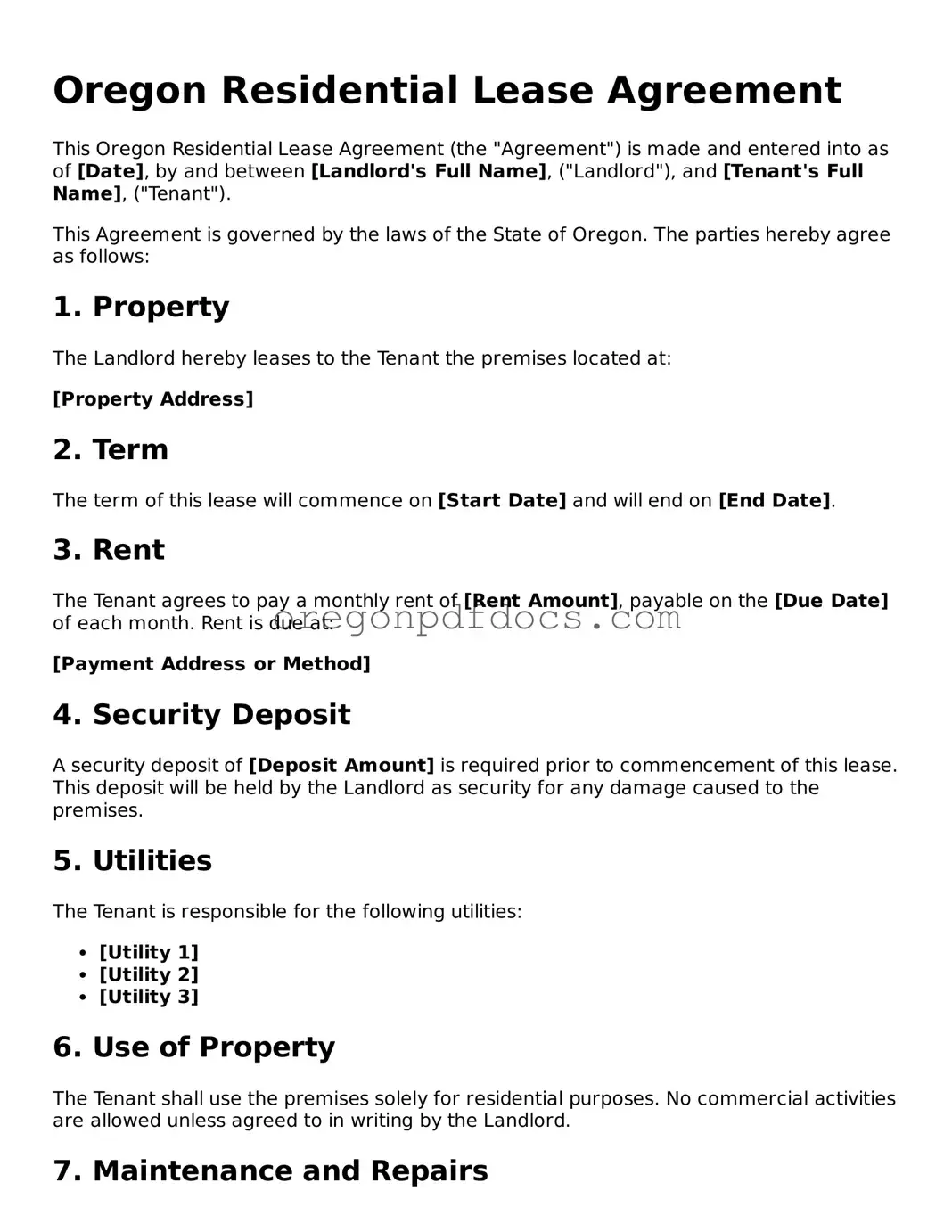Oregon Residential Lease Agreement
This Oregon Residential Lease Agreement (the "Agreement") is made and entered into as of [Date], by and between [Landlord's Full Name], ("Landlord"), and [Tenant's Full Name], ("Tenant").
This Agreement is governed by the laws of the State of Oregon. The parties hereby agree as follows:
1. Property
The Landlord hereby leases to the Tenant the premises located at:
[Property Address]
2. Term
The term of this lease will commence on [Start Date] and will end on [End Date].
3. Rent
The Tenant agrees to pay a monthly rent of [Rent Amount], payable on the [Due Date] of each month. Rent is due at:
[Payment Address or Method]
4. Security Deposit
A security deposit of [Deposit Amount] is required prior to commencement of this lease. This deposit will be held by the Landlord as security for any damage caused to the premises.
5. Utilities
The Tenant is responsible for the following utilities:
- [Utility 1]
- [Utility 2]
- [Utility 3]
6. Use of Property
The Tenant shall use the premises solely for residential purposes. No commercial activities are allowed unless agreed to in writing by the Landlord.
7. Maintenance and Repairs
The Tenant will keep the premises clean and in good condition. The Tenant must promptly report any maintenance or repair issues to the Landlord.
8. Termination
To terminate this lease, the parties must provide written notice of [Notice Period] days.
9. Miscellaneous
This Agreement constitutes the entire agreement between the parties. No amendments shall be made unless in writing and signed by both parties.
10. Signatures
IN WITNESS WHEREOF, the parties hereto have executed this Lease Agreement as of the date first above written.
__________________________
Landlord's Signature
__________________________
Tenant's Signature
